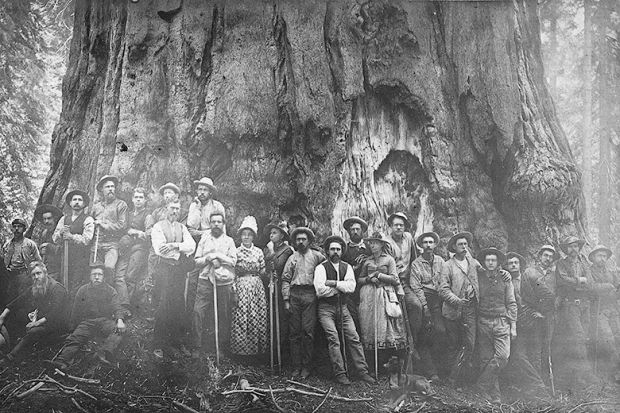When the US pushed west in the 19th century, it rode the railroad, the telegraph and the cavalry, intent on conquering the wilderness and commodifying the natural world, assured by its myths of modernist progress and manifest destiny. Yet as deadly and destructive as this sweeping expansionism was, it was not without its countercurrents – in Daegan Miller’s term, “countermodern” currents whose participants conceptualised and engaged the wild and the natural in radically alternative ways.
Four such countermodern case studies constitute the heart of Miller’s book. Wedding his surveyor’s precision to a poetics of nature, Henry David Thoreau in 1859 creates a seven-foot-long “countermodern map” of his beloved Concord River, a map filigreed with notations as to river currents and sandbars and marked in the middle by the willow tree that Thoreau uses to measure the river’s rise and fall. Around the same time, in the “great northern wilderness” of the Adirondacks, abolitionists establish programmes by which escaped slaves and other African Americans settle and farm the land – not on the basis of manifest destiny, but on the belief that shared agrarian labour might overcome racism and foster sustainable engagement with the wild. In California, the 1848 gold rush precipitates the slaughter of native populations and the claim that giant sequoias are somehow timelessly American – yet among the big trees the Kaweah Colony also takes root, practising a land-based political economy founded in the anarchist writings of Pierre-Joseph Proudhon. According to Miller, countermodern moments even emerge within the very image-making of manifest destiny; employed as the official photographer of the Union Pacific railroad, A. J. Russell manages to embed in his railroad photographs ambivalence, critique and an “iconography of sacrifice”.
In telling these stories, Miller offers an engaging interplay of natural and political history, and demonstrates an eye for that single detail that can illuminate the whole damn diorama. One of the biggest of the sequoias amid which the Kaweah colonists settled, for example, had earlier been christened “General Sherman” as part of the sequoias’ symbolic Americanisation. The Kaweah colonists renamed the tree “Karl Marx”, and so we have in This Radical Land Figure 41, itself worth the price of the book: an 1887 photo of some 25 colonists standing shoulder to shoulder in front of a tree wider than they are as a group, and the caption: “The Kaweahans and Karl Marx”.
Through such details, Miller succeeds in sketching an evocative if episodic shadow history of American expansion, and succeeds also in unearthing the 19th-century roots of an environmentalism founded in sustainable human engagement with the natural world. I did wonder, though, if some of those chronicled in the book weren’t as much interested in simply finding a safe place to settle and stay as in crafting a countermodern ethic. And so with those settlers in mind, a question: what of all those others, those created and cast adrift by westward expansion itself, the itinerant railroad hobos and the endlessly unsettled families, left to write a very different natural history of American dissent and dislocation?
Jeff Ferrell is visiting professor of criminology at the University of Kent. His latest book is Drift: Illicit Mobility and Uncertain Knowledge.
This Radical Land: A Natural History of American Dissent
By Daegan Miller
University of Chicago Press
336pp, £22.50
ISBN 9780226336145
Published 16 April 2018
POSTSCRIPT:
Print headline: Living off-grid with ‘Karl Marx’
Register to continue
Why register?
- Registration is free and only takes a moment
- Once registered, you can read 3 articles a month
- Sign up for our newsletter
Subscribe
Or subscribe for unlimited access to:
- Unlimited access to news, views, insights & reviews
- Digital editions
- Digital access to THE’s university and college rankings analysis
Already registered or a current subscriber? Login








